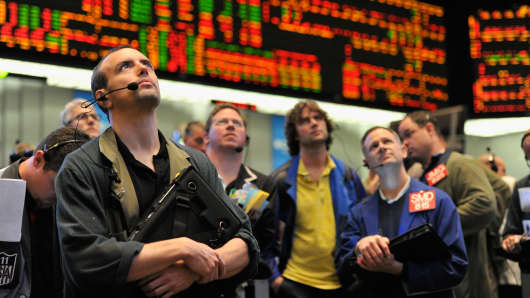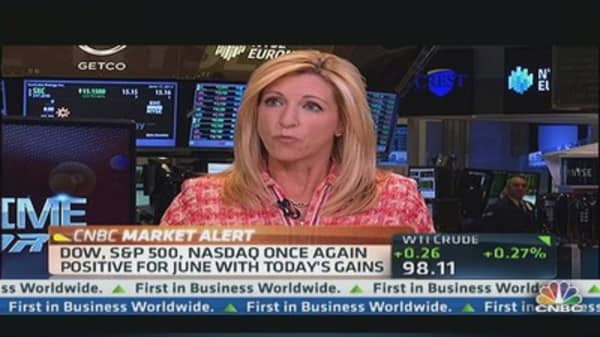Globally, corporate bond issuance has hit $853.8 billion so far this year, up 15 percent from the same period in 2012, according to the latest figures from Dealogic.
Of particular note is the size of the deals: an average of $780 million in the U.S, a gain of 14 percent from last year.
This has come even though bond funds have suffered through consecutive weeks of record outflows. Investors pulled $14.4 billion out of all fixed income funds last week, according to Citigroup, as part of a trend likely to see a record in June for bond exits.
(Read More: Every Major Asset Class Is Overpriced: Analyst)
The month's total thus far has been $37 billion, just below the record $41.8 billion in October 2008, the month after Lehman Brothers collapsed, according to TrimTabs.
Mass selling in bonds has come as investors worry that the Fed is ready to pull its support from the market, despite the softening economic numbers and a 1 percent inflation rate.
(Read More: Good Manufacturing News Not as Good as It Looks)
Should the Fed indicate at its meeting this week that the end is not near for its $85 billion a month buying of Treasurys and mortgage-backed securities—aka quantitative easing—the big bond selloff could turn into a massive head fake.
After all, the Fed has pledged it won't start raising rates until unemployment drops to 6.5 percent from its current 7.6 percent, and inflation hits 2.5 percent.
Recent comments from Chairman Ben Bernanke, however, have fueled speculation both over when the Fed starts pulling back the QE-associated asset purchases, and when it begins raising rates. The two events are unlikely to occur simultaneously, with QE reductions coming first.
"Confusion around both seems to be at work in the current market environment," Citigroup economist Robert V. DiClemente said in a note.
"Although the back up in rates was well advanced by the time the chairman reaffirmed that it might be appropriate to throttle back the pace of accommodation in the not too distant future, markets also have been discounting an earlier start date to exit strategies and the first rate hike."
(Read More: For Some, Fed Can Start Tapering NOW)
Correspondingly, Citigroup's fixed income team is recommending that investors in junk bonds start moving up the quality ladder a bit.
Amid a record year as well for issuance, high yield bonds have been the best sector performer by a long shot.
The Barclays US Corporate High Yield Index has returned 4.2 percent this year. The iShares iBoxx $ High Yield Corporate Bond exchange-traded fund has gained about 3 percent, even while seeing $1.3 billion in outflows for June alone.
Indeed, fund flows can help give a picture of retail investor views while providing a poor gauge of performance. Equity mutual funds, for instance, saw hundreds of billions in outflows while rallying more than 140 percent from the March 2009 stock lows.
For companies, the stakes are huge.
If rates start to go back up that could signal the beginning of the end of the cheap-money era that has helped underpin corporate earnings performance.
Julian Jessop at Capital Economics said he thinks central banks will exercise caution in slowing the spigots.
(Read More: Cramer: A 'Nightmare Scenario' for Bulls and Bears)
Companies heading to the market with new debt offerings, though, will want to consider the consequences of the market over-anticipating Fed moves.
"While losses in bonds as yields move higher theoretically could push investors out of fixed income assets more quickly than first imagined ... (the market) likely will wait to see risk-adjusted results swing in favor of equities," said Tobias Levkovich, chief market strategist at Citi.
"Moreover," he added, "five-year returns will likely be needed to convince investment boards versus one-year data, though recent Fed releases show that some shifts already are occurring."
—By CNBC's Jeff Cox. Follow him @JeffCoxCNBCcom on Twitter.





